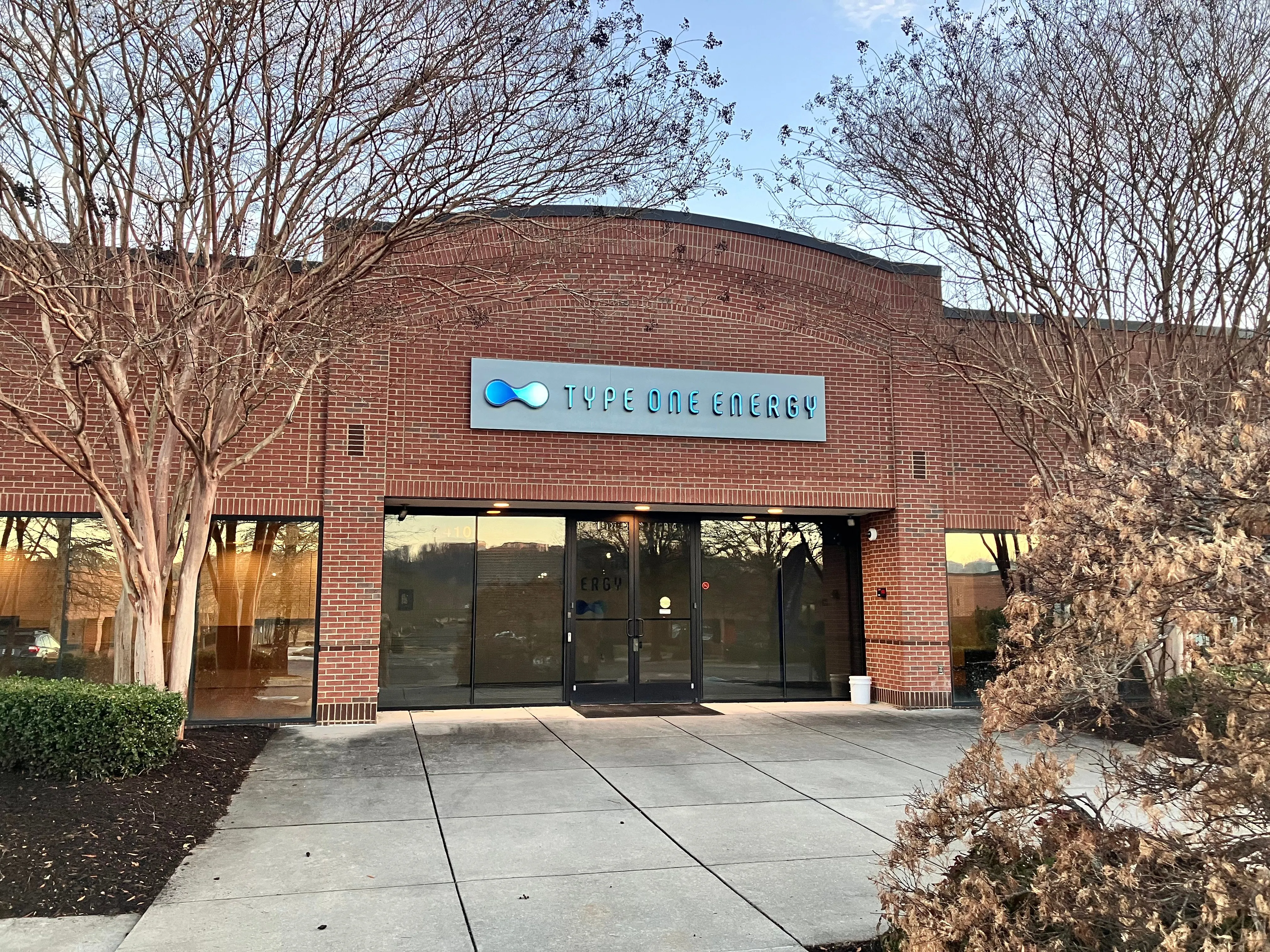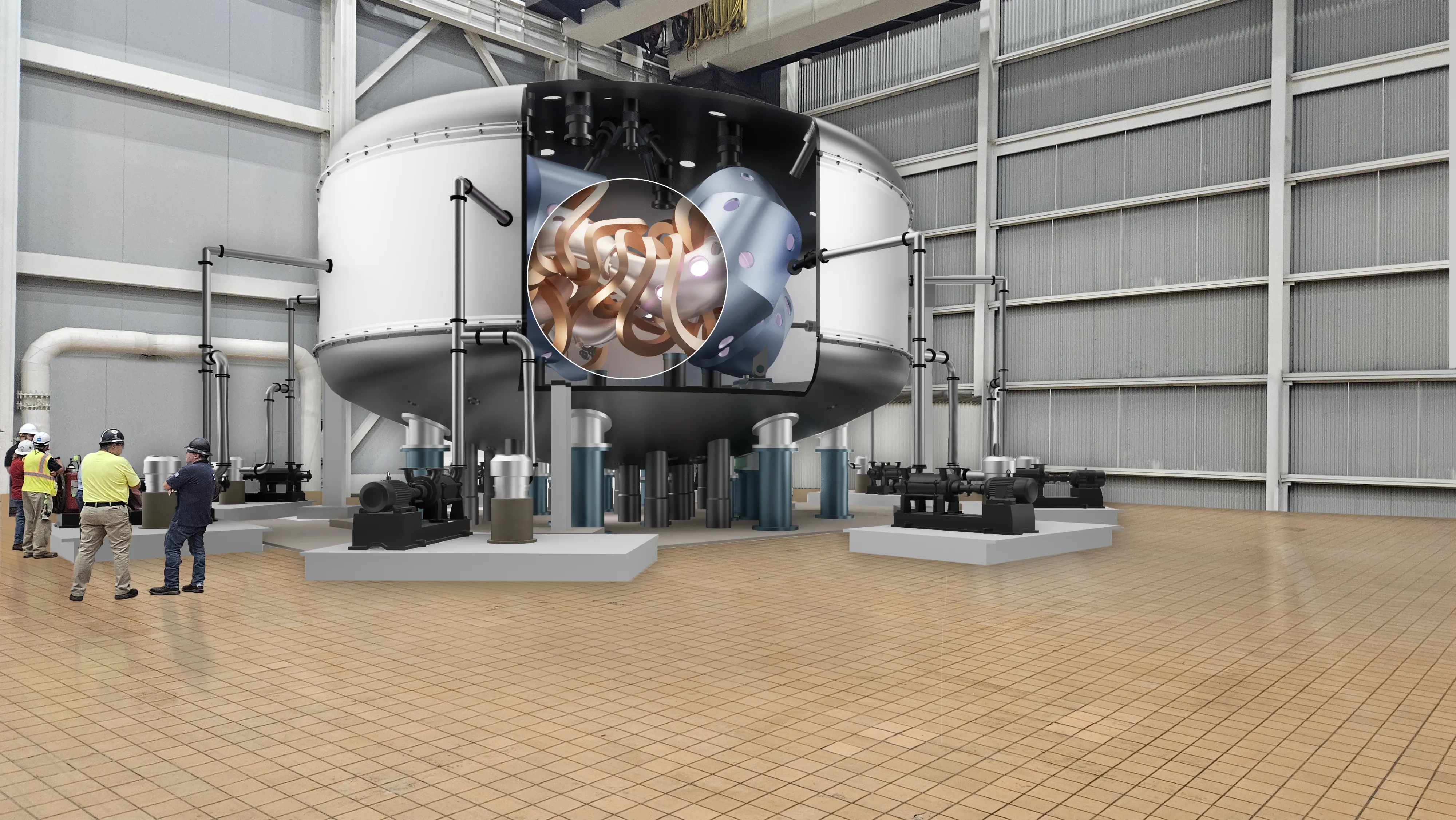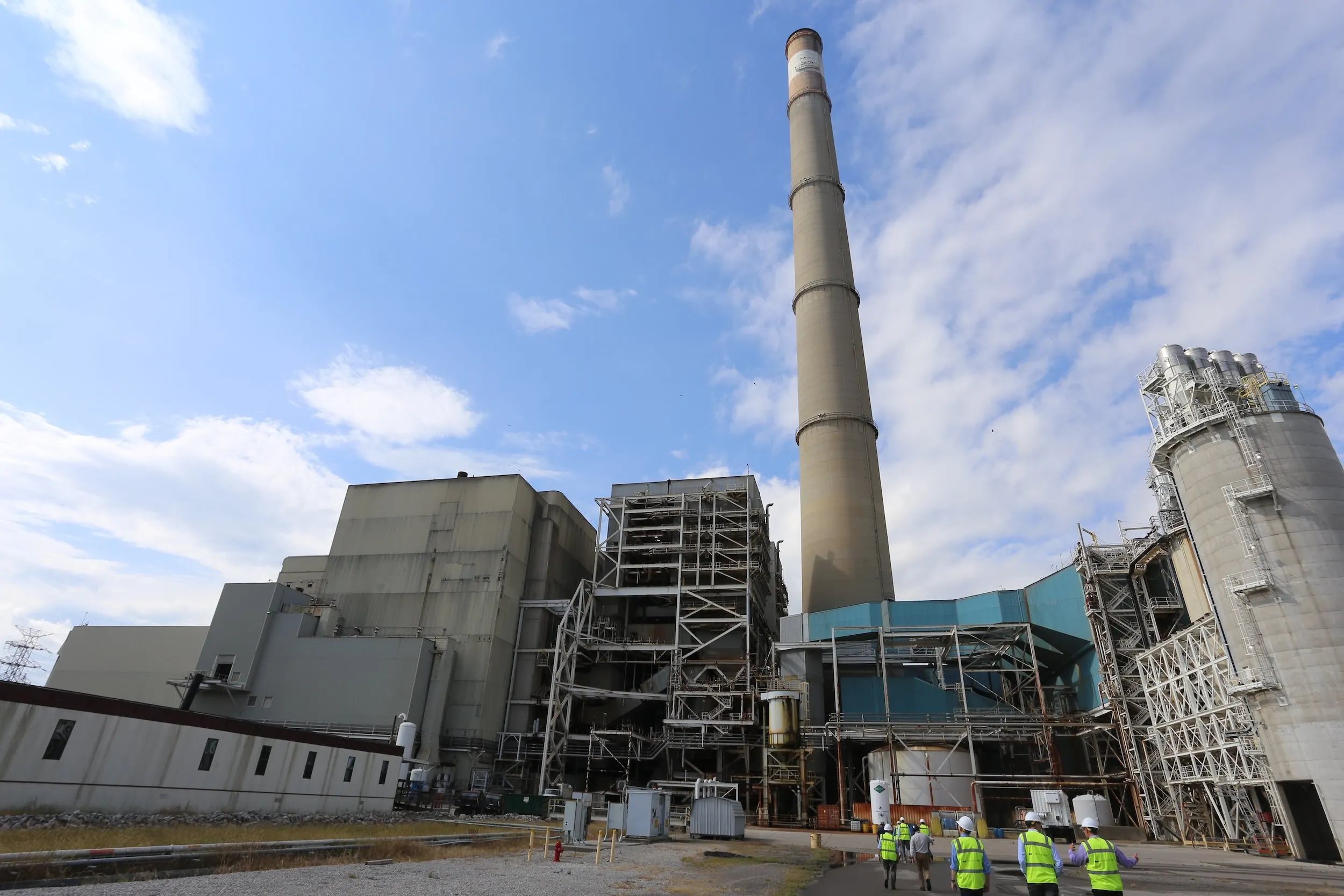Type One Energy's Partnerships Hat-trick
By Naomi Scott-Mearns and Melanie Windridge
Type One Energy last week announced three new partnerships with: 1) Commonwealth Fusion Systems; 2) Pine Island New Energy Partners (PINEP); and 3) the Tennessee Valley Authority (TVA). All of the announcements were made during the week of the FusionXInvest:Global event, which took place in Silicon Valley, 12-14th February 2025.
So, what have Type One Energy done and why is it significant?

The outside of Type One Energy's newly established HQ offices in Knoxville, TN. ©Type One Energy
What have they done?
Type One Energy is a fusion energy company, formed in 2019, focused on commercialising its stellarator fusion system. The company have, in the past week, made a triple announcement of three new partnerships:
- An agreement with Commonwealth Fusion Systems (CFS) that gives Type One Energy an exclusive license to use CFS’ groundbreaking high-temperature superconducting (HTS) cable technology in the development of its own proprietary stellarator fusion magnets.
- A strategic collaboration with the private equity firm, Pine Island New Energy Partners (PINEP), to develop a more robust supply chain for the fusion energy industry.
- A Cooperative Agreement with the Tennessee Valley Authority (TVA) to jointly develop plans for a potential TVA fusion power plant project in the Tennessee Valley region using Type One Energy stellarator fusion power technology.

An artistic rendering of Infinity One, the prototype Type One Energy will build in Bull Run. The rendering is placed inside the turbine hall, in the exact space where they will build, and the people at the bottom are actually real. ©Type One Energy
Why is it impressive?
Each of the partnerships is significant on its own and each signifies an aim to accelerate fusion realisation and commercialisation by looking to the future: to ensure key technologies are developed (as per the magnet agreement with Commonwealth Fusion Systems), end users and their communities are engaged with fusion power plant development (as per the agreement with the Tennessee Valley Authority), and the supply chain of fusion grows to support the burgeoning industry (as per the agreement with Pine Island).
Dr. Chris Peters, Managing Director of Fusion Energy Partners Ltd., said of the Type One Energy triple announcement: “Type One has recognised, rightly I believe, that the goal of delivering viable fusion electrons to the grid is not a task that should be attempted in isolation. It requires a concerted effort across a broad front which includes the development of innovative fusion machines, capability in the supply-chain to deliver critical components and infrastructure and pull from the utilities that are tasked with delivering energy to the consumer reliably and at an acceptable price. I view these announcements as positive assertion that energy produced by fusion WILL be a significant part of the global clean energy portfolio on a timescale that matches the needs of human-kind.”
Why is it important?
Cynics will say that Type One Energy is gearing up for a new round of fundraising and so putting out news of partnerships to appeal to investors in lieu of new technical results. Perhaps so, but that doesn’t negate the importance of partnerships in reducing risk and accelerating development.
Indeed, this was always the plan. Their website says, “Type One Energy is now executing its FusionDirect technology program, which is a partner-rich, capital-efficient path to commercialization.”
The partnership between Type One Energy and Commonwealth Fusion Systems is interesting and important because it is a relationship between two companies following different approaches to fusion—stellarators and tokamaks. Yet both companies see value in the partnership and technology transfer. The agreement allows Type One Energy to have an exclusive licence to use Commonwealth Fusion Systems’ leading high-temperature superconducting cable technology to develop its own stellarator fusion magnets. This partnership allows Type One Energy to leverage CFS's expertise in manufacturing powerful HTS magnets without needing to build the technology from scratch, therefore reducing development time, cost, and risk for Type One Energy.
The Cooperative Agreement partnership announced between Type One Energy and the Tennessee Valley Authority (TVA) is to collaborate on plans for a power plant and to potentially site this power plant, Infinity Two, within the Tennessee Valley region, which will create jobs for the area and a source of clean power.

A visit of the Type One Energy team to Bull Run, where they will be building Infinity One, their engineering prototype that will verify by test, design aspects for their pilot power plant, Infinity Two. ©Type One Energy
The Infinity Two fusion powerplant will be 350 MW equivalent to provide baseload fusion power to the grid by the mid-2030s, based on stellarator fusion technology. The partnership with Commonwealth Fusion Systems will allow the development of high strength magnets to support Infinity Two.
Infinity Two builds upon Type One Energy’s Project Infinity which selected a former Bull Run Fossil Plant in Clinton, Tennessee, as the site for the company’s first stellarator test device, Infinity One. The press release states collaborative activities as “power plant siting studies, environmental reviews, and licensing, as well as development of project plans and financing from various sources. Type One Energy will support TVA in its evaluation and review of the project.”
So no site yet for Infinity Two, unlike CFS’s recent announcement with Dominion Energy Virginia, but a meaningful collaboration nonetheless. Working with utilities and other end users will be imperative in developing a product that is fit for purpose, so the earlier fusion companies engage and collaborate the better.
As for the Pine Island announcement, the lack of a mature supply chain is a risk factor in fusion energy development, so partnering to accelerate the development of a robust supply chain could be beneficial for the wider fusion industry. Type One Energy will act as an institutional operating partner, providing technical expertise to Pine Island to identify and evaluate potential supply chain companies, while Pine Island, as a private equity firm, can provide the necessary capital to help these supply chain companies scale up their operations.
“Collectively, our recent announcements related to TVA, CFS and Pine Island New Energy Partners mark broad progress in building a realistic fusion commercialization value chain.” Christofer Mowry, CEO of Type One Energy, told us. “Our company’s strategy has always been rooted in our deep knowledge of how the global energy industry really works, how the electricity we all use gets put on the grid. As an energy technology OEM [Original Equipment Manufacturer], we understand how Type One Energy should most efficiently fit into the broad ecosystem of participants in the energy generation value chain, from suppliers to generators. The business relationships in these announcements are simply manifestations of this strategy.”
Viewed together, these three partnerships with Type One Energy show the importance of forming cooperative relationships with different stakeholders to scale-up fusion. Partnerships share knowledge and drive innovation and therefore are good for the growth of the fusion industry.
The importance of partnerships of different types was explored in the Fusion Energy Insights podcast series, The Fusion Frontier: Investing in Tomorrow’s Energy, which interviewed experts in fusion energy and investment to dig deeper into the potential of fusion as a clean energy source. Nick Walkden, who was at the time the UK Director of the Fusion Industry Association (FIA), championed the value of industry partnerships and collaboration for fusion, saying: “partnerships work because in a partnership you can bring together the best bits of different partners’ capabilities in order to reinforce something that becomes stronger than the sum of its parts. We see that in public private partnerships and we see that in partnerships between industry actors.… For a sector like fusion, we really shouldn't place any limitations on what partnerships can look like. They can be as little or as simple as a conversation and an agreement to work in a sort of combined collaborative way, right up to an incorporated joint venture. We really shouldn't place restrictions on what that might look like because a really healthy industry is an industry full of collaboration and partnership.”
What’s next?
The outcomes of the partnerships with Type One Energy will emerge over the next few years. Type One Energy is implementing its FusionDirect programme, which is a development strategy that pursues the most efficient path to a fusion power plant over the next decade and which applies “a partner-intensive and capital-efficient strategy”. This suggests that Type One Energy’s recent announcements of partnerships will not be the last and that alliance-building will be a key pillar of their fusion mission going forward.
